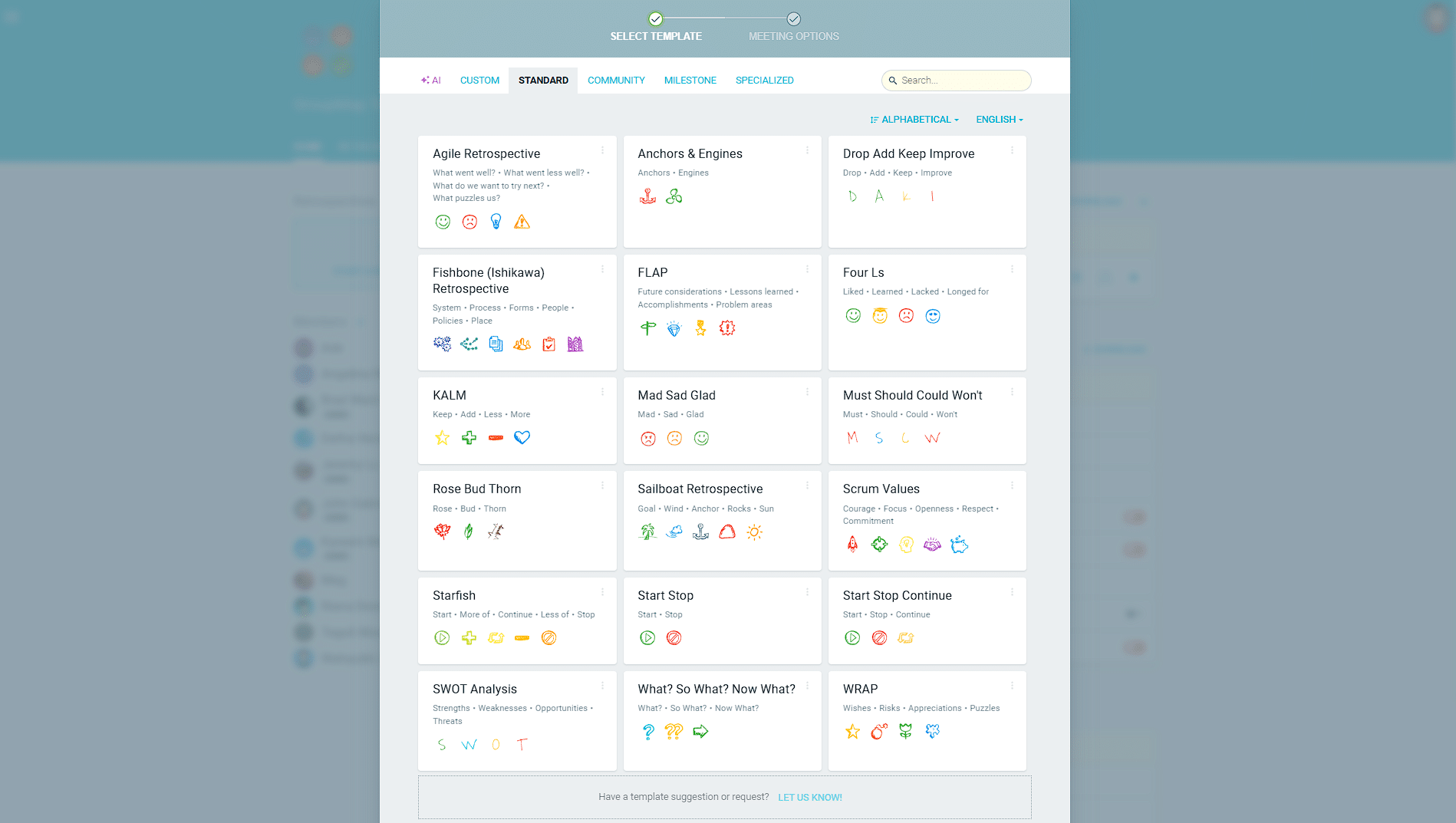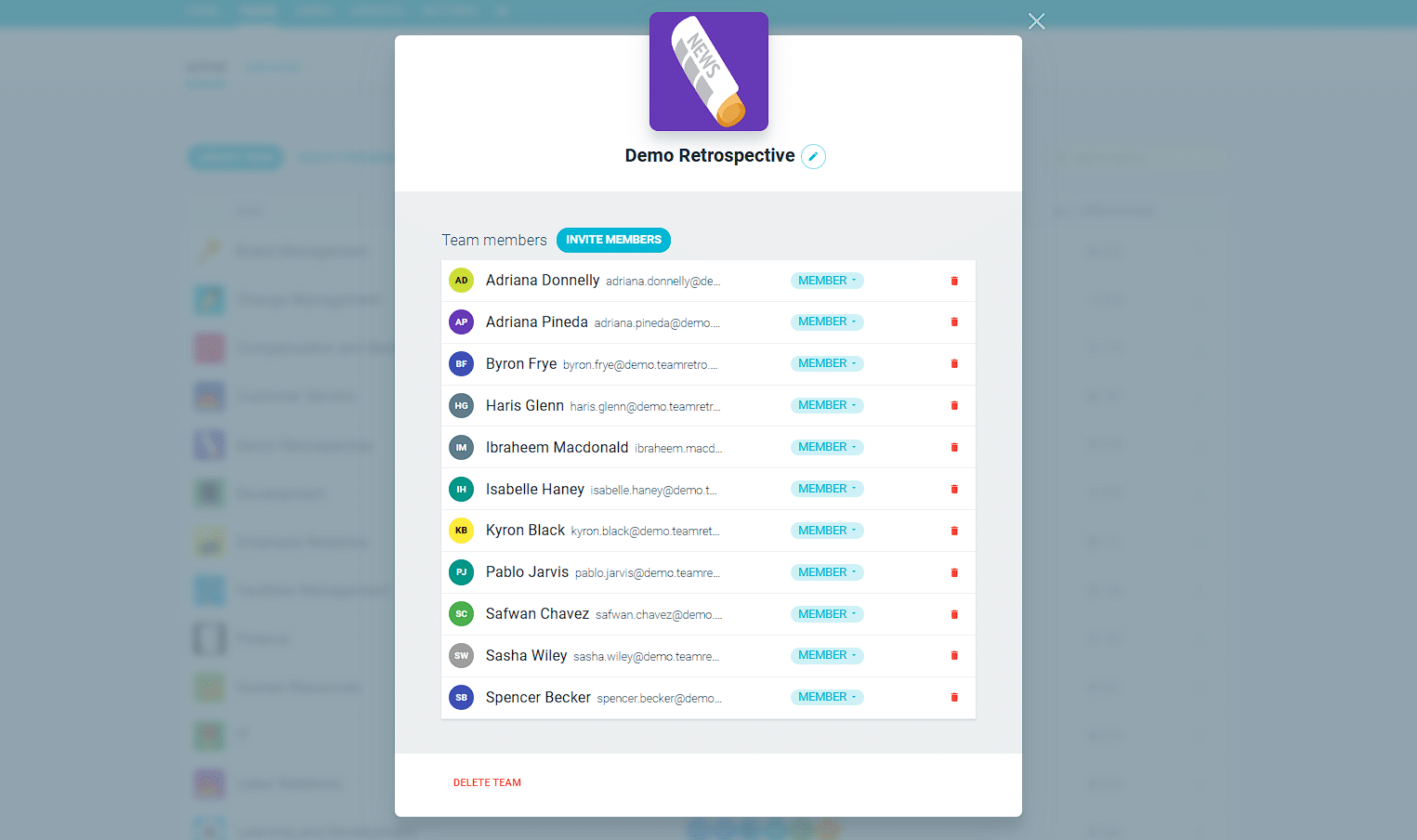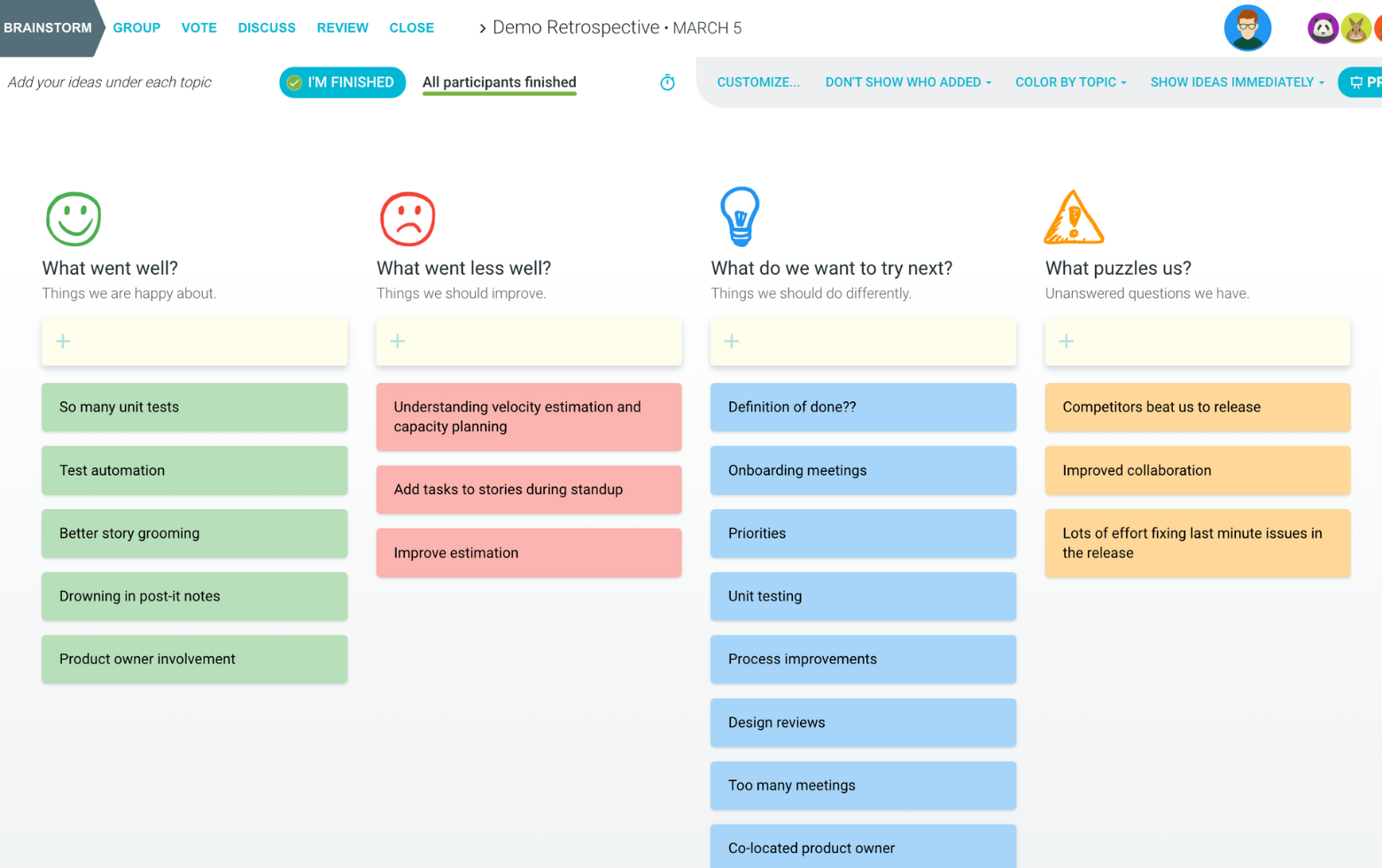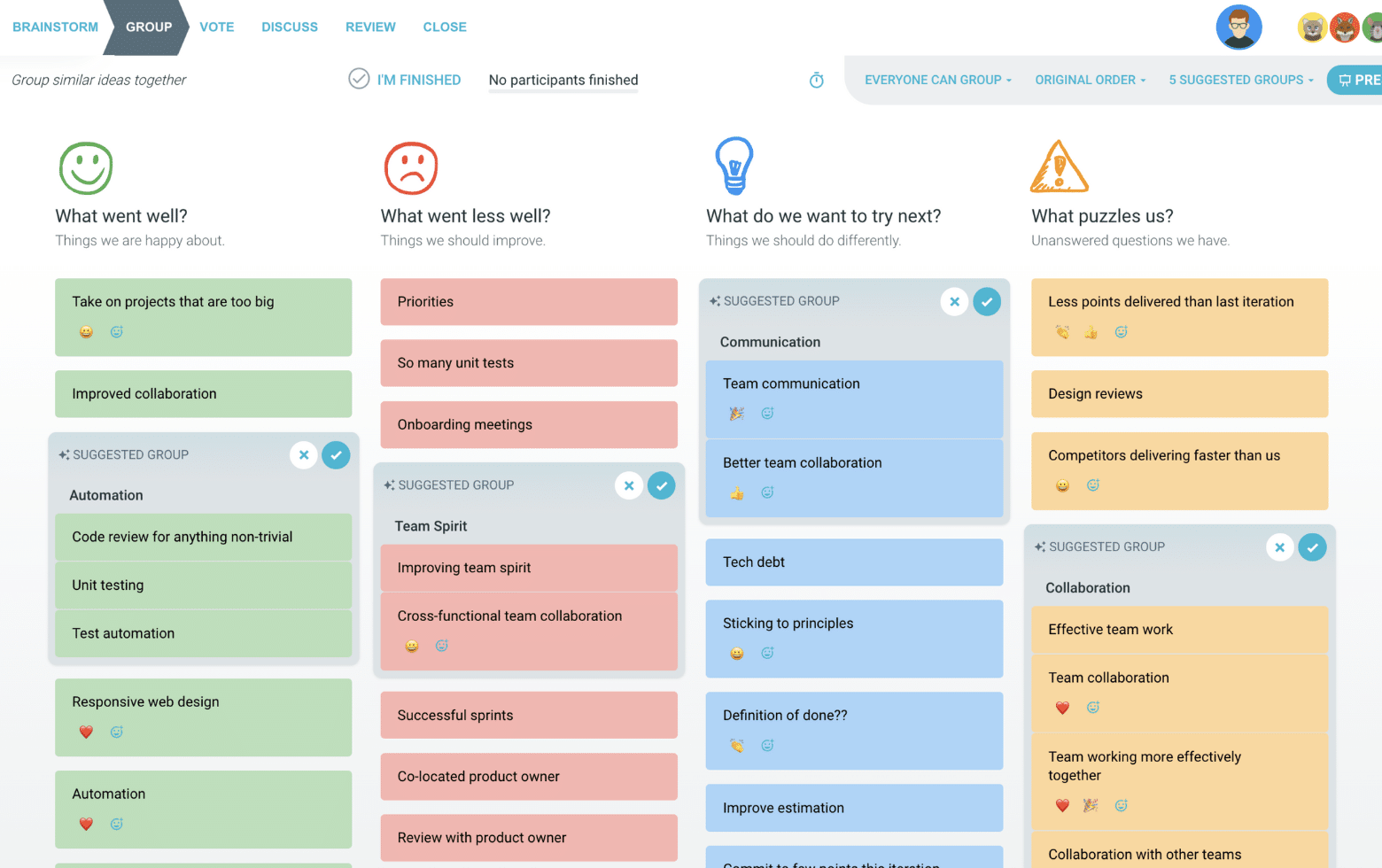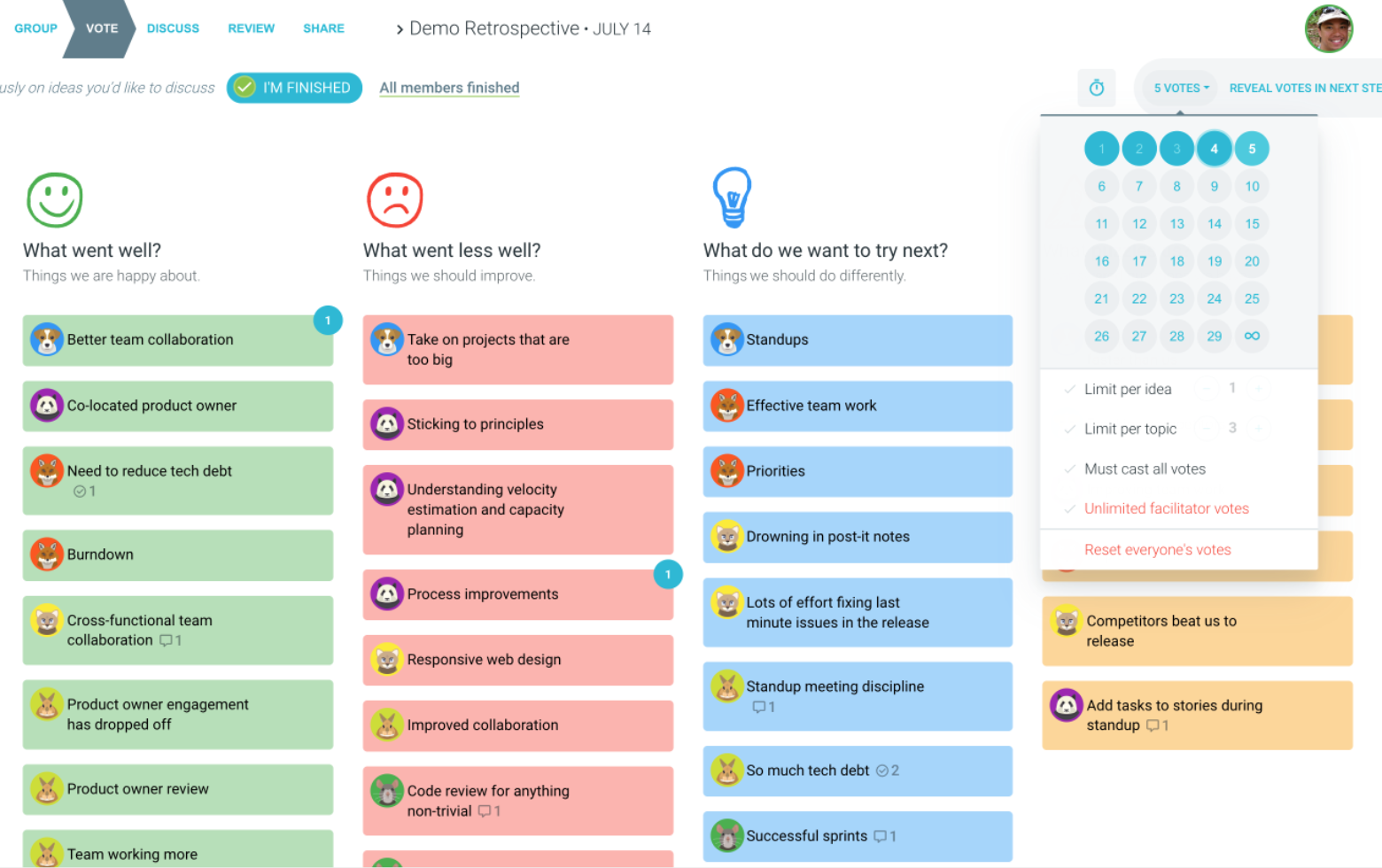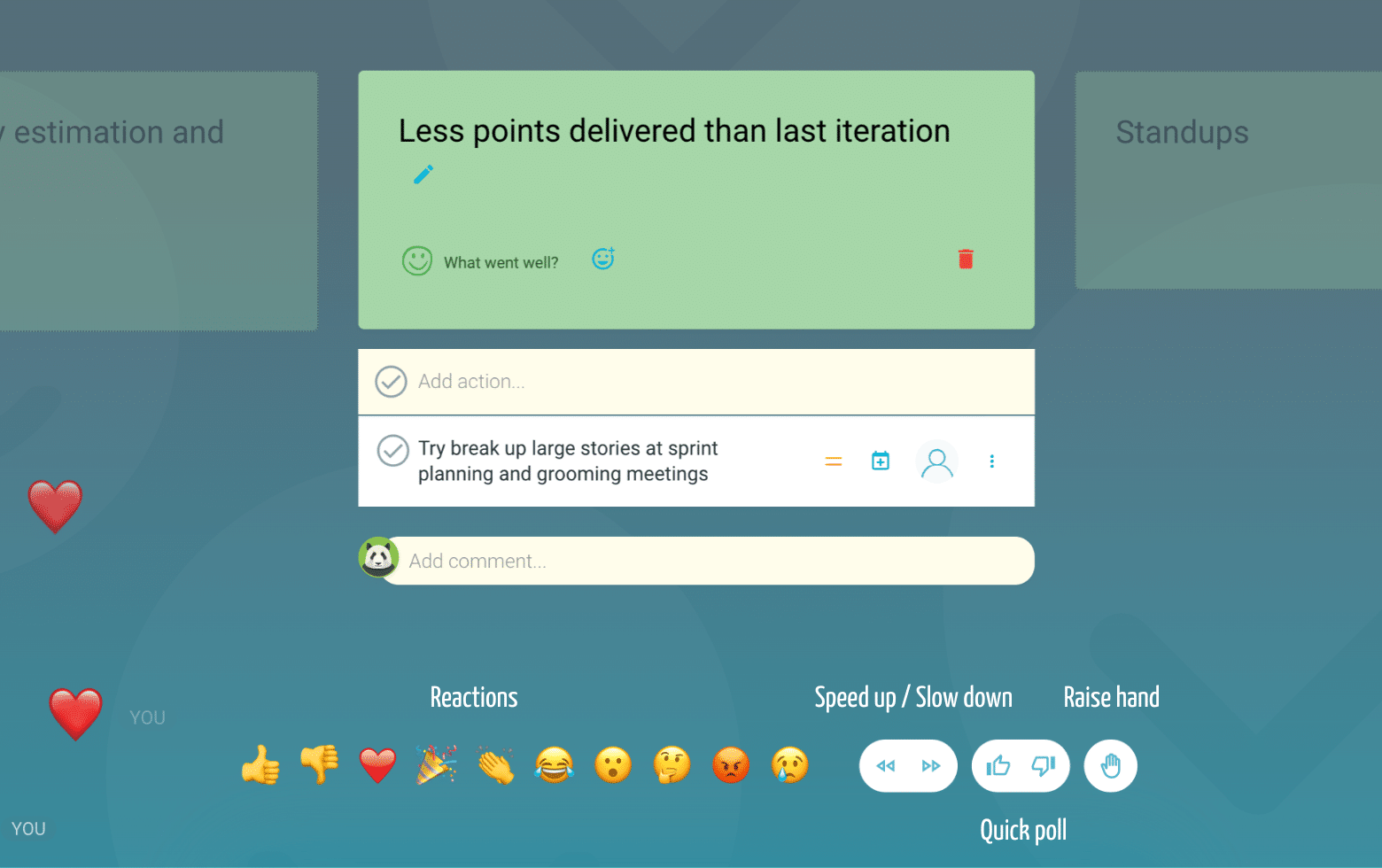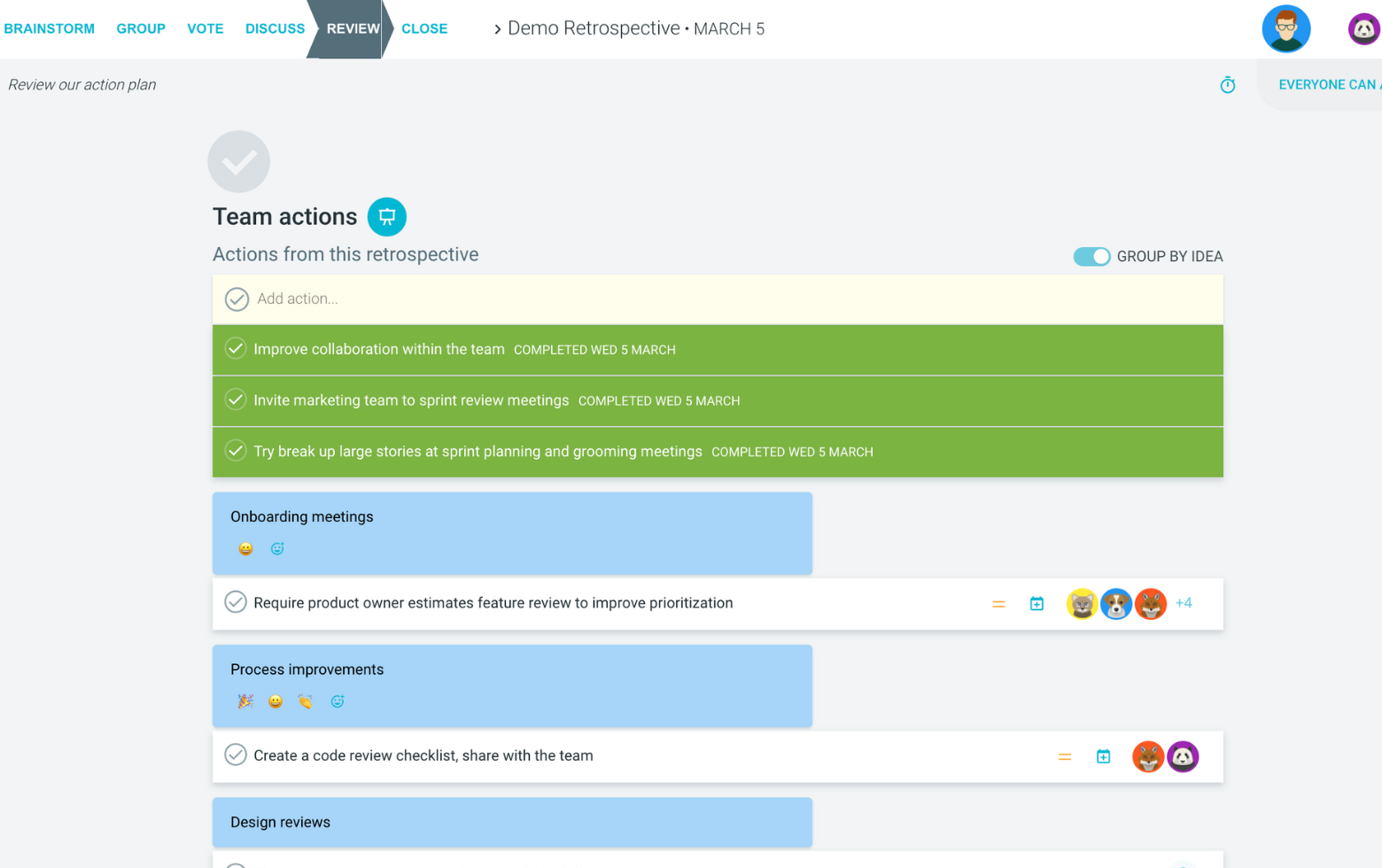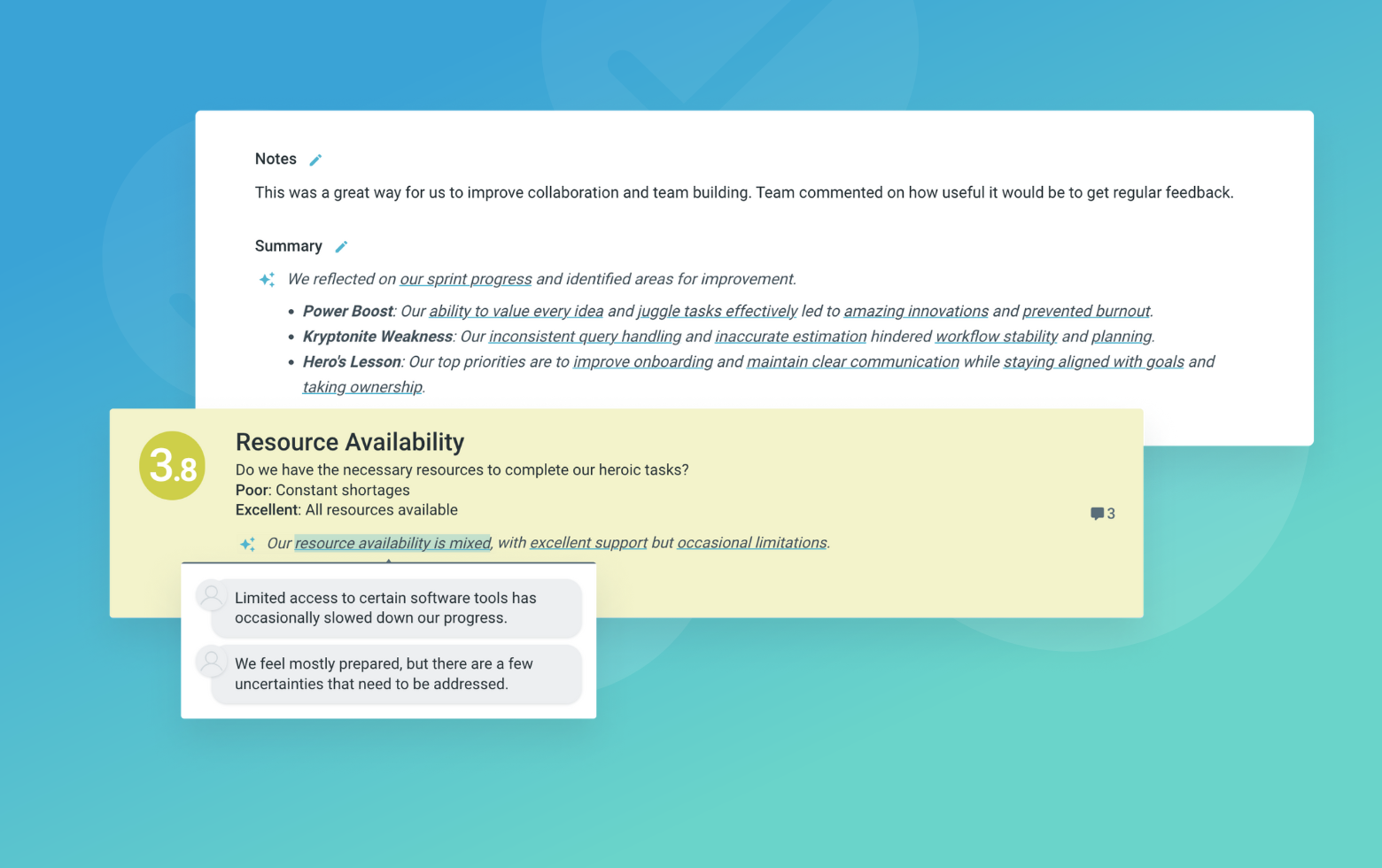The Christmas Agile Retrospective brings seasonal cheer to your team's reflection process, using holiday-themed categories to structure meaningful discussions about your recent work period.
This festive format transforms standard retrospective elements into engaging Christmas metaphors: Gifts represent valuable learnings, Joy highlights positive experiences, the Grinch symbolizes challenges, Elves acknowledge helpful contributions, and Wishes capture future aspirations. This approach creates a relaxed atmosphere that encourages open communication while maintaining focus on continuous improvement.
By framing feedback within familiar holiday concepts, teams can have more comfortable conversations about successes and setbacks. The Christmas theme works particularly well for end-of-year retrospectives or when teams need a morale boost during challenging periods, helping to end sprints or projects on a positive note while gathering actionable insights for the future.
What is The Christmas Retrospective
Gifts
What have we learned and received as gifts during this period?
This topic focuses on knowledge, skills, or insights the team has gained. Encourage participants to think about unexpected learnings, new skills developed, or valuable feedback received. These 'gifts' represent the positive takeaways that will benefit the team moving forward.
Joy
What has brought us happiness and joy in our work?
This topic highlights positive experiences and achievements that energized the team. Focus on moments of satisfaction, successful collaborations, or accomplishments that made team members proud. Understanding sources of joy helps identify what motivates the team and should be preserved or amplified.
Grinches
What has caused us troubles or issues during this period?
This topic addresses challenges, obstacles, or frustrations the team encountered. Create a safe space for honest discussion about what didn't work well or created difficulties. Focus on systems and processes rather than individuals, and view these 'Grinch' moments as opportunities for improvement rather than complaints.
Elves
Who or what has helped us succeed in our work?
This topic recognizes helpful people, tools, or processes that supported the team's success. Encourage participants to acknowledge colleagues who went above and beyond, effective resources, or practices that enhanced productivity. This helps identify valuable support systems and promotes a culture of appreciation.
Wishes
What do we wish for in our future work together?
This topic focuses on aspirations, improvements, and changes the team wants to see. Encourage forward-thinking ideas about processes, tools, skills, or working relationships. These 'wishes' often form the basis for actionable improvements in the next work period.
Suggested icebreaker questions
- If your recent work experience was a Christmas movie, which one would it be and why?
- What's one 'gift' (skill or knowledge) you'd like to receive to help you in your role next year?
Ideas and tips for your retrospective meeting
- Consider using festive visual cues like holiday icons or a winter-themed virtual background to enhance the Christmas atmosphere
- Balance the fun elements with structured action items to ensure the retrospective leads to meaningful improvements
- Encourage team members to prepare their thoughts in advance for each category to maximize productive discussion time
- Set a positive tone by starting with 'Gifts' and 'Joy' before moving to the more challenging 'Grinch' topics
- End the session by converting 'Wishes' into concrete action items with owners and timelines to ensure follow-through
- Consider adding a brief festive activity at the beginning or end to reinforce team bonding during the holiday season
.
How to run effective meetings with TeamRetro
Start Your Session in a Click
Log into TeamRetro and choose your template. Customise questions and the workflow to create your perfect retro for your team.
Create Your Team Easily – No Separate Accounts Needed
Brainstorm Individually – Free From Bias
Smart Grouping for Faster Insights
Fair, Flexible, and Fast Voting
Engage, React, and Capture Key Insights
Walk your team through ideas one by one with Presentation Mode. Stay in sync, spark real-time discussions, and capture feedback with comments, live reactions, and polls—all in one place.
Turn Ideas Into Action
Propose next steps with team buy-in, get AI-powered action suggestions, and keep everything in one place. Committed actions sync to your personal dashboard and integrate with your workflow tools—keeping you on track.
Save, Share, and Stay on Track
Get quick AI-powered summaries, add facilitator notes, and store retrospectives in your library for easy access. Schedule your next session and track published actions to keep your team accountable at the next retro.
Turn Team Data into Actionable Insights
Uncover trends, common themes, and key engagement metrics at a glance. Track sentiment shifts, analyze conversations, and monitor completed actions to drive continuous improvement.
